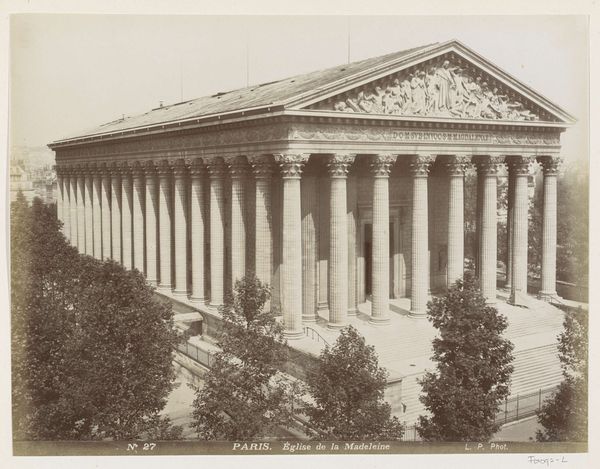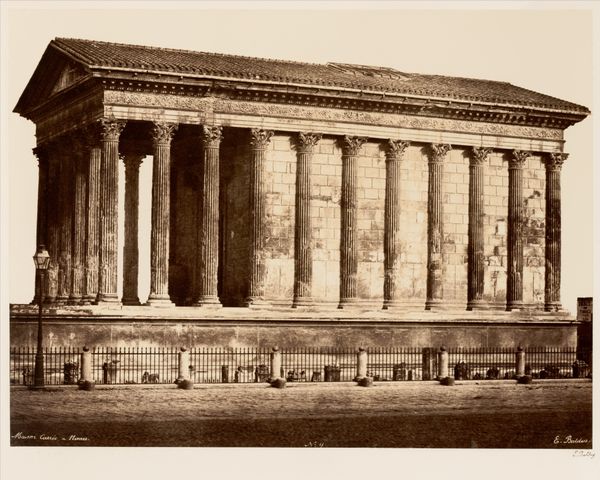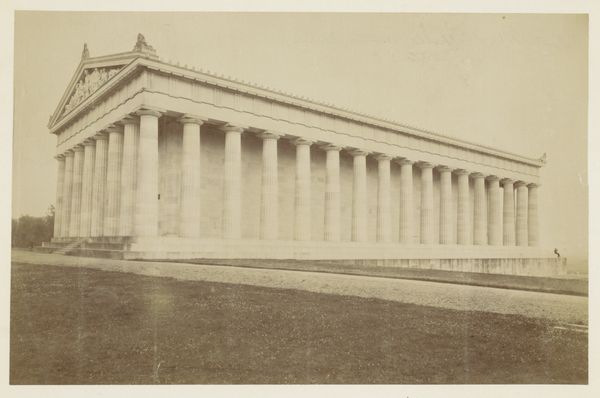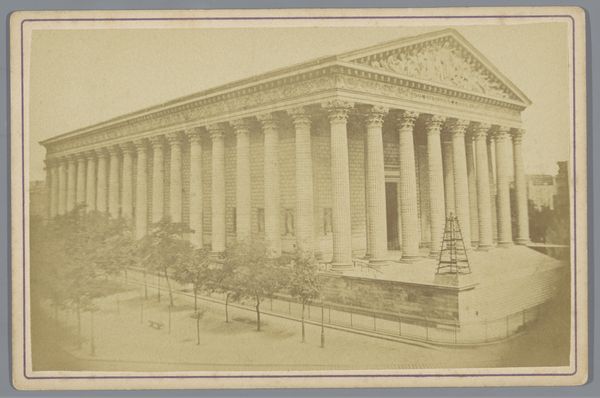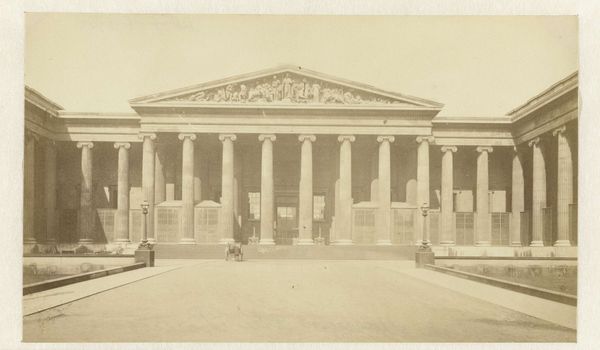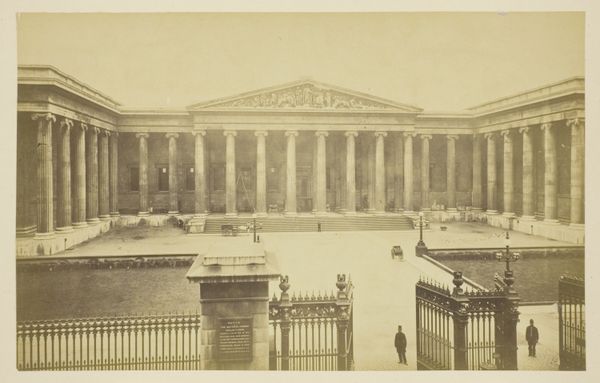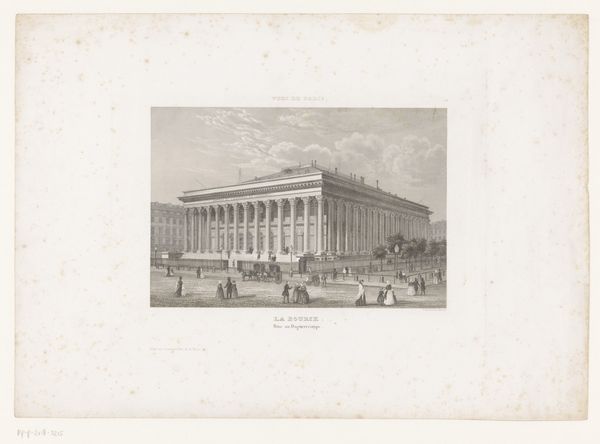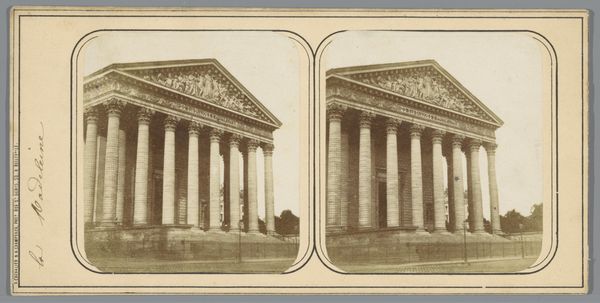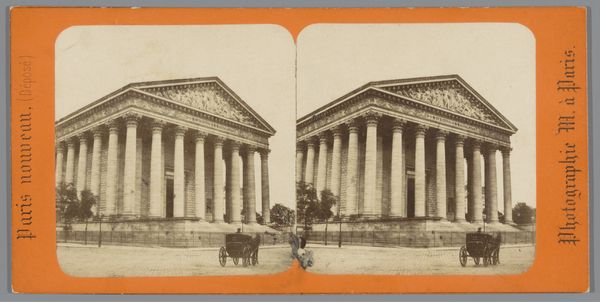
Church of the Madeleine (Eglise de la Madeleine) c. 1860
0:00
0:00
print, photography, albumen-print, architecture
#
neoclacissism
#
16_19th-century
# print
#
landscape
#
photography
#
cityscape
#
albumen-print
#
architecture
Dimensions: 20.4 × 28.6 cm (image); 33.9 × 43.9 cm (mount)
Copyright: Public Domain
Curator: Looking at this print by Édouard Baldus, dating from around 1860, it’s hard not to be struck by the sheer volume of materiality that’s represented and then embodied again in this albumen print. Editor: Immediately, I feel a sense of almost overwhelming grandeur, but softened somehow. It's monumental, of course, yet there’s also something quiet and dreamlike in the tones. It makes you feel like a tiny observer in a huge, still world. Curator: It's an interesting feeling given the print medium; albumen, specifically, dominated photographic reproduction and art prints. Here, in 'Church of the Madeleine (Eglise de la Madeleine)', we are invited to consider architecture consumed as reproducible artistic commodity. This approach aligns well with the neo-classical structure portrayed here: imposing design, meticulously crafted materials transformed to mass-produced form for broader distribution. Editor: That contrast, between the monumental and the accessible, really resonates. And to think about how many hands would have touched this image, from the workers quarrying the stone for the church itself, to Baldus meticulously preparing and developing the photograph! Curator: Exactly! Consider the social implications: how many people could afford this artwork versus how many could afford to physically construct such an architectural marvel. The photograph democratizes the art but also highlights inherent class and production values, right? This particular albumen print now resides at The Art Institute of Chicago, which provides further layers of context and custodianship for such objects of cultural importance. Editor: It is wild to consider the distance traveled, materially and conceptually. Now, in Chicago, its monochrome stillness makes you contemplate all those lost eras and what remains… almost ghostly. Thank you, Édouard, for capturing time for us. Curator: Precisely! Baldus' lens delivers both grand structural elegance but further reveals questions related to manufacturing economies. A thoughtful tension, well said!
Comments
No comments
Be the first to comment and join the conversation on the ultimate creative platform.
